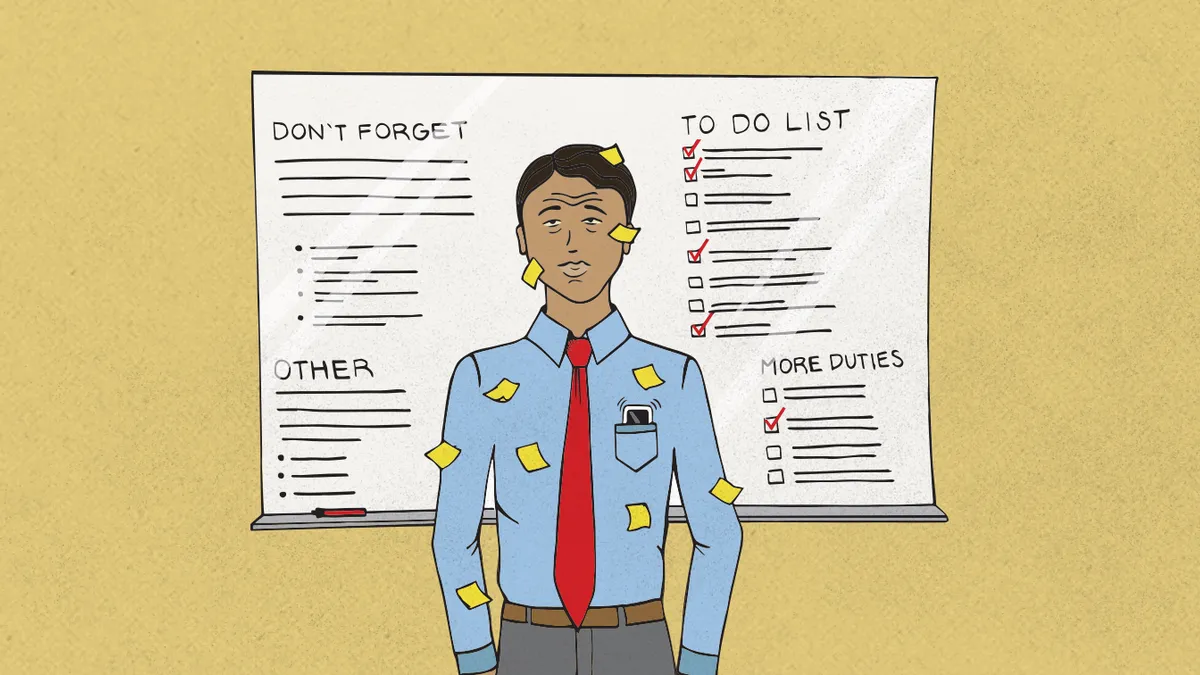In "Other Duties as Assigned," HR Dive editor Kate Tornone weighs in on employment trends, compliance best practices and, of course, the situations that require you to go above and beyond your normal duties. Today: rethinking what constitutes "power" in the workplace.
You’ve no doubt seen the headlines. People around the country are speaking up about sexual harassment, calling out politicians, comedians and executives.
Many of these stories share a common factor: the perpetrator is a person who holds some level of power over the victim’s livelihood.
This has led employers to wonder what they should be doing. They’re calling their attorneys, asking what they should be doing with respect to higher-ups. But while that’s important, it’s only half (if not less than half) of the equation, according to Jonathan Segal, partner at Duane Morris LLP.
Where to look
“We’re focusing on people with uber power and a lot of writers and lawyers are talking about the superstars — rainmakers, execs — but we’re measuring power through our eyes,” he told me during a recent chat. “And I think we need to be looking at power through the eyes of those victimized.”
For example, he said, “if you’re a nine-dollar-per-hour hotel housekeeper and the head of housekeeping assaults you, that person has as much power over your life as execs do for others.” Front-line managers have the power to make someone’s life miserable and a housekeeper may be even more trapped than someone in a higher-level position would be, Segal explained.
Of course, it’s still important to make sure your executives refrain from unacceptable behavior, Segal said; it’s certainly not a bad idea to start at the top and make clear that with great power comes greater responsibility.
But the point is that focusing on producers and Senators is nowhere near enough. Some of the accusations Segal’s clients have received involved lower-level supervisors. “So I think it’s a good idea to be looking at the rock stars, but [keep in mind that] you don’t need to be a rock star to be abusing the power you have,” he said.
We need to be looking at power through the eyes of those victimized.

Jonathan Segal
Partner, Duane Morris LLP
And while some of the incidents making headlines have been egregious, harassment in your workplace shouldn't have to rise to that level for you to take it seriously. Conduct far less egregious can still be illegal harassment, Segal noted.
Focus on your culture
Segal also said he’s seeing a shift in the calls he’s getting. Clients used to call and ask, “What do we do?” Now, employers know the basics (policies, reporting procedures and training). Instead, they’re calling and asking, “what more can we do?”
Policies, procedures and training are a good start, and there’s a good chance you have those in place already. But there’s also a good chance that they, on their own, are not working.
So what’s the “more” that you should be doing? Focusing on culture, at all levels. You really need to address where the values spelled out in your policy intersect with your culture. Segal says you should be asking yourself how you can infuse your policy into your culture.
And, like any culture shift, this will require buy-in from upper management. “If leadership doesn't embrace it, policies and reporting procedures are no good,” Segal says.
Addressing claims
And then what do you do when you receive a complaint? Segal told me the same thing he’s said at every nondiscrimination talk I’ve seen him give: thank the complainant for coming to you.
Why? Your first concern is avoiding any inference of retaliation. Even if your investigation ultimately reveals no harassment, you could still be liable for retaliation, so tell the individual that you appreciate them bringing their concerns to you.
Then, you begin your investigation. If something happened publicly and you have multiple witnesses, it may be a pretty simple undertaking. But often, you’re going to have to interview the accused. And then, if you determine that the complaint has merit, you take prompt and proportionate corrective action. Sometimes that’s going to involve termination, but not always. You’ll have to consider the severity and pervasiveness of the harassment, he said. (Need more details on conducting an investigation, making a determination or doling out discipline? The U.S. Equal Employment Opportunity Commission has a handy guide for you.)
You’ll have to address things a little differently if you don’t have a complaining employee. Sometimes HR hears about things through the rumor mill, or sometimes you have an exec whose escapades are a well-known secret. You can’t ignore those things, Segal said, but you’ll have to find a lawful way to navigate the situation.
For example, if you’ve heard a rumor, it may make sense to start asking employees: Have you observed any inappropriate behavior? Are there others who may have observed this, too? Segal cautioned against naming names, however; sometimes rumors are just rumors and you don’t want to create a problem where one doesn’t exist.
Segal says a client of his took this approach when it received an anonymous complaint from an employee. It hired a third-party vendor to go to the worksite and do a “climate survey.” The vendor interviewed employees individually about various workplace topics and, without disclosing the nature of the complaint, asked the employees whether they had witnessed anything that made them uncomfortable. More than half volunteered that they had seen a male supervisor harass a female subordinate.
Segal concedes that not every situation will be this cut and dry. “It was one of the easiest ones I’ve seen in my life,” he said, adding that, when asked, the supervisor didn't deny the allegations.
The bottom line
So what does this all mean for you? Look beyond those who you think are “in power,” ensure your culture embraces both respect and accountability and ensure that you’ve built a bit of flexibility into your procedures.
Each situation is going to be different, Segal said. “Look at each case individually,” try not to let your bias cloud your judgment and finally, “be thoughtful.”



















